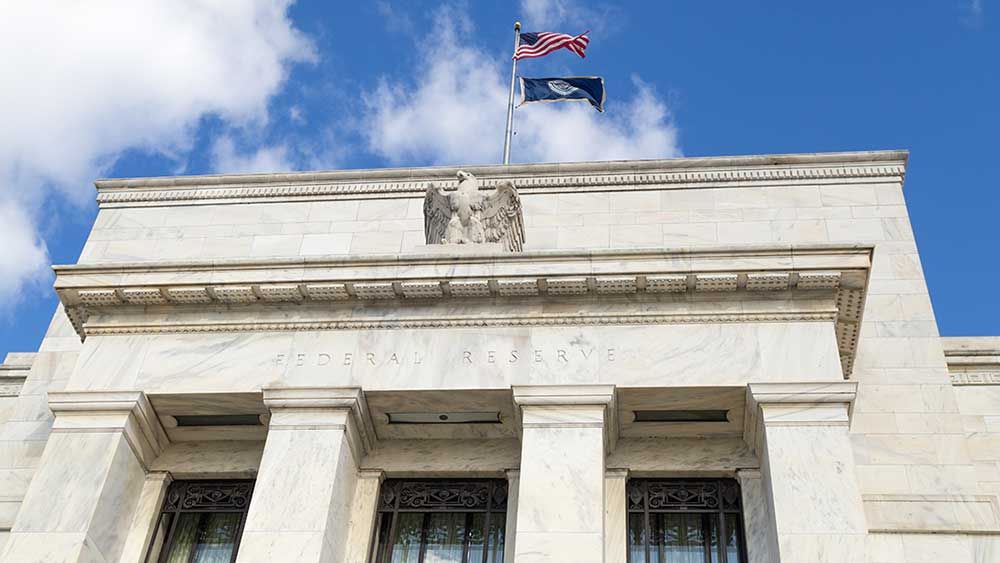Federal Reserve May Be Done Hiking, But Powell Leaves Doubt; S&P 500 Wavers
The Federal Reserve raised its key interest rate above 5% but signaled that it may be done hiking as bank turmoil increases the risk of a U.S. recession. Yet Fed chair Jerome Powell said that economic developments could require further tightening. The S&P 500 turned slightly lower as Powell spoke, with investors unsure of whether the long-awaited Fed pivot has arrived.
X
Federal Reserve Meeting Policy Statement
The Fed dropped language adopted at the May meeting indicating that "some additional policy firming may be appropriate." In its place, the new Fed meeting statement said policymakers "will closely monitor incoming information and assess the implications for monetary policy."
The Fed didn't rule out further rate hikes or explicitly announce a pause. However, simply affirming that it's no longer leaning to more rate hikes might be interpreted as an intention to stand pat — barring a big inflation surprise.
The combination of today's quarter-point rate hike and removal of the tightening bias adds up to what economists call a "dovish hike."
Yet Powell's message wasn't entirely dovish. While he said the Fed's key rate may be in the right place, he made clear that the choice is whether to hold steady or to raise it further. In other words, rate cuts aren't around the corner.
Ahead of today's Fed meeting, Nomura economists Aichi Amemiya and Jacob Meyer wrote that they expected Powell to make clear that near-term rate cuts are unlikely, "pushing against the current market pricing of a couple of rate cuts by the end of this year."
Bank Crisis Reins In The Fed
Powell said that the banking sector is "sound" and "conditions have broadly improved." But he added that credit appears to be tightening in a way that is more severe than normal.
If it weren't for the bank crisis, the Fed would likely be intent on an additional rate hike or two. After Powell's hawkish testimony before the Senate on March 7, markets were betting that the Fed's key interest rate would reach a range of 5.5% to 5.75%.
But Powell said after the March 22 Fed meeting that tighter credit stemming from the bank crisis would essentially substitute for rate hikes, leaving monetary policy "less work to do."
At the time, Powell said it was guesswork just how much the bank crisis would slow the economy. The latest batch of economic data still shows that inflation is running much too hot for the Fed and the job market is still far too tight.
The Labor Department's JOLTS report on Tuesday showed job openings fell by 384,000 to 9.6 million in March. While that's down 15% since December, there are still 3.8 million more job openings than unemployed persons. Payroll processor ADP estimated on Wednesday that the economy added a surprisingly strong 296,000 private-sector jobs in April.
Powell noted that the labor market remains "very tight." He said there's been some softening, but wage growth is still a couple of percentage points where it needs to be to be consistent with 2% inflation.
Bank Stocks Tumble
Yet if Fed policymakers were still disposed to further tightening, that view may have gone out the window on Tuesday. Regional bank stocks got pummeled as officials began the two-day Fed meeting.
As of Monday afternoon, markets were still pricing in nearly 30% odds that the Federal Reserve would hike today and then once more on June 14. Yet Tuesday saw continued fallout for regional bank stocks, defying FDIC hopes that the arranged sale of First Republic Bank to JPMorgan Chase (JPM) would help stabilize markets. PacWest Bancorp (PACW) plunged 27.8% and Western Alliance Bancorp (WAL) 15.1%. Even super regional banks got creamed, with Comerica (CMA) down 12.4% and KeyCorp (KEY) 9.4%.
By Tuesday afternoon, near-30% odds of a June rate hike fell to zero.
The Fed is partly to blame, having let inflation get away, then resorted to rapid-fire rate hikes to contain it. Now banks have plenty of low-interest loans on their books, along with troubled commercial real estate loans. Yet banks are having to fight to hang onto their deposits by offering high savings-account interest rates that can compete with money market interest rates around 5%.
S&P 500 Reaction To Fed Meeting
As Powell finished speaking around 3:20 p.m., the S&P 500 turned slipped 0.1% in Wednesday stock market action. That reversed a modest gain when the Fed's 2 p.m. policy statement hit. Markets may have taken some comfort from Powell's remark that he still thinks the U.S. economy can skirt recession, but they turned down after he cast doubt on rate hikes later this year.
On Monday, the S&P 500 made a run at the Feb. 2 high of 4195 before reversing lower. A Fed pause signal was largely priced in. However, it might set up the S&P 500 for another try at busting through the top of its trading range dating back to late August.
Be sure to read IBD's The Big Picture every day to stay in sync with the market direction and what it means for your trading decisions.
YOU MAY ALSO LIKE:
These Are The Best 5 Stocks To Buy And Watch Now
Join IBD Live And Learn Top Chart-Reading And Trading Techniques From The Pros
Find The Best Growth Stocks To Buy And Watch
IBD Digital: Unlock IBD's Premium Stock Lists, Tools And Analysis Today
IBD Stock Of The Day: GDX Stock Shines As Bank Woes, Debt-Ceiling Fears Lift Gold Price
Source: Investor's Business Daily


